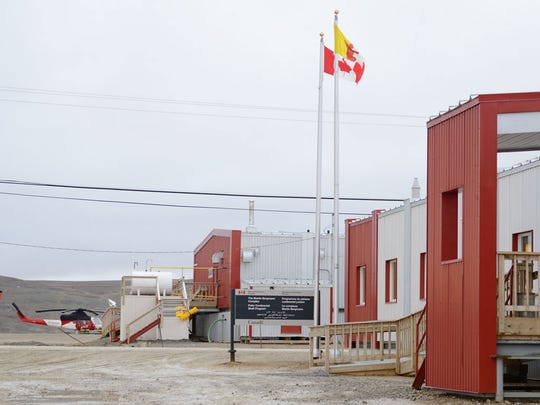OTTAWA, Ontario — The Canadian military is looking at expanding its logistics footprint in the Arctic as it sets the stage for a bigger presence in the barren and isolated region.
Canadian officers say the improved logistics structure is required if the military is to meet the Canadian government’s objectives in the far north.
The Liberal Party government, elected in October, has signaled it is equally committed to ramping up operations in the Arctic as the previous Conservative government administration. But to do so will require extensive logistics support, a daunting task as Canada’s sparsely populated northern region consists of more than 1.5 million square miles and is larger in size than India.
As part of the improved logistics structure, the Canadian Forces wants to expand its Arctic Training Center, opened in 2013, in Resolute Bay, Nunavut. The facility, which can house and support 120 soldiers, has been used only in the winter months.
But now the military wants to provide more space for equipment and to allow for operations year-round. The facility is outfitted with over-snow vehicles and trucks.
“We need to build (on) what we’ve got right now in terms of capacity,” said Canadian Army Lt.-Col. Luc St-Denis, who co-ordinates training at the center and who oversaw its initial development. “January to April is a small season. There is potential for more than that, especially in the springtime and summertime.”
The center could be expanded so more equipment is able to be pre-positioned, St-Denis said. That would cut down on costs of airlifting supplies or chartering aircraft, he added.
In 2013 the Canadian Army determined that conducting operations in the Arctic was five to seven times more expensive than those in southern Canada. In 2012, then-defense chief Gen. Walter Natynczyk acknowledged that supporting missions in the far north was tougher than in war zones such as Afghanistan.
St-Denis pointed out that everything needed for the Canadian Forces to operate in the far north must be brought in from the southern part of the country. He noted that other Canadian government departments could use the expanded training center as a staging area for research projects.
In addition, as part of efforts to overcome logistics problems in the Arctic the Canadian Forces is establishing what it calls northern operations hubs or NOHs. The NOHs will allow initial rapid deployment and up to 30 days of sustained operations in the Arctic.
The locations of the primary NOHs are Iqaluit and Resolute Bay, both in Nunavut, as well as Yellowknife and Inuvik, both in the Northwest Territories, the Canadian Forces said. Alternate hubs will be in Rankin Inlet, Whitehorse, Cambridge Bay and Hall Beach.
 |
| The Canadian military is using the Arctic Training Center at Resolute Bay, Nunavut, in the Northwest Territories, for a few months each year. (Photo: Canadian Armed Forces) |
“The CAF (Canadian Armed Forces) is still planning to establish all the NOH by 2018,” said Capt. Thomas Edelson, spokesman for the Canadian Joint Operations Command Headquarters, which is responsible for domestic and international missions.
Also expected to be operating in 2018 is a naval refueling station at Nanisivik, Nunavut. The previous Conservative government had proposed a major upgrade to the deep-water port at that site but because of high construction costs in the Arctic the price tag for the project jumped to more than (CAN) $250 million (US $187 million).
As a result the government scaled the project back to a refurbished dock and fuel tank farm at a cost of (CAN) $116 million. Work began in the summer of 2015 on that project.
Since 2006 the Canadian government has emphasized its intention to significantly boost the military presence because oil, gas and minerals in the Arctic are critical to the country’s economic growth. The Conservative government approved construction of a fleet of new Arctic Offshore Patrol Ships and a Polar-class icebreaker. Neither have been built yet, although construction of the first Arctic patrol ship is underway. The first ship is expected to be ready by 2018.
The Liberal government has reiterated the need for an Arctic presence and has stated it will carry on with the various projects as well as boost surveillance in the far north.
The difference between the two governments is how they approach relations with the Russians.
Conservative Prime Minister Stephen Harper warned that Russia’s growing military presence in the Arctic posed a challenge to Canada, adding that the Russians were expanding their bases and other defense infrastructure in the region.
But the Liberal government has signaled it is interested in a thaw in relations. Foreign Affairs Minister Stéphane Dion suggested in January that the Conservative government’s policy was not effective and it was time to work with the Russians in areas of common interest such as the Arctic.
“Canada was speaking to the Russians even during the tough times of the Cold War,” Dion noted. “And now we are not speaking because of the former policy, of the former government. In what way is it helping our interests in the Arctic?”
No comments:
Post a Comment